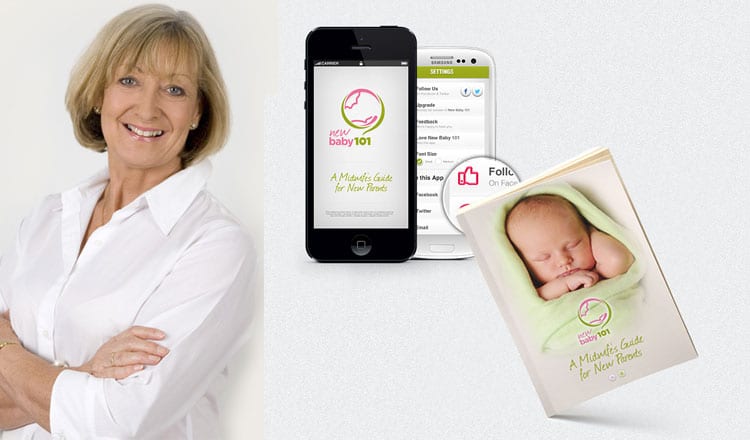Discussing baby’s wee and poo movements does not make for a good dinner party conversation starter, but it is a very hot topic at mothers’ groups. If you aren’t comfortable describing your wee one’s colour, consistency, frequency and odour with your new besties, heed this advice from The Carousel’s resident Midwife and author, Lois Wattis…
She is the midwife with the most-ess, having worked at the frontline of baby delivery, lactation, and with newborns and new parents for more than 15 years. And now The Carousel’s resident Midwife and author Lois Wattis has released her must-have baby manual, New Baby 101 – A Midwife’s Guide for New Parents, to address parents’ most common concerns. “I am well aware of the pressure parents experience when they have all the responsibilities of caring for their newborn,” explains Lois.
“I wrote this book because I know the questions new parents ask, and how difficult it is for them to retain all the information they need in the few days they are in hospital. New Baby 101 – A Midwife’s Guide For New Parents is for parents negotiating the steep learning curve encountered during the early weeks of parenting a new baby, providing them with detailed and reliable guidance.”
Here, Lois tackle the tricky topic of monitoring baby’s wee and poo…
Why is it so important to keep track of baby’s output?
Baby’s wees and poos are a reliable guide to whether he is taking sufficient volumes of breastmilk at each feed. When baby is a few days old and mother’s milk has ‘come in’ his output becomes established at around 8 nappies per 24 hours. If baby is feeding well, many of his nappies will be wet and pooey, and they may total more than 8 per day. The breastfed baby’s poo will be a mustard-yellow colour, quite runny or like soft mousse and it may have little grainy looking bits in it – this is all normal.
When a baby is taking adequate amounts of breastmilk he should produce at least three poos every 24 hours. His wee will look pale yellow coloured, and some nappies should be quite heavily wet. If a breastfed baby less than 6 weeks-old produces less than two poos each 24 hours, this is an early indication that the baby is not obtaining enough breastmilk. This situation needs to be checked by a midwife, child health nurse or doctor as soon as it is recognised. If baby’s output fits the above description you can be assured baby is getting enough breastmilk.
After about 6 weeks of age, baby’s anal sphincter begins to work more effectively and can hold on to poo for longer, so it becomes normal for these older babies to poo less frequently.
Want more advice from midwife and author of New Baby 101 – A Midwife’s Guide For New Parents, Lois Wattis?
How do I know my breastfed baby is getting enough food?
About Lois
Lois Wattis has been a Midwife for 20 years, a Registered Nurse for 24 years and an International Board Certified Lactation Consultant for 15 years.
Lois’ experience is broad, and her focus is now on supporting parents negotiating the steep learning curve as they care for their new baby. Lois’ book which includes videos “New Baby 101 – A Midwife’s Guide for New Parents” is available from her website www.newbaby101.com.au and her New Baby 101 App is available for smartphones via Google Play and iTunes Appstore.
Visit www.newbaby101.com.au for details.








